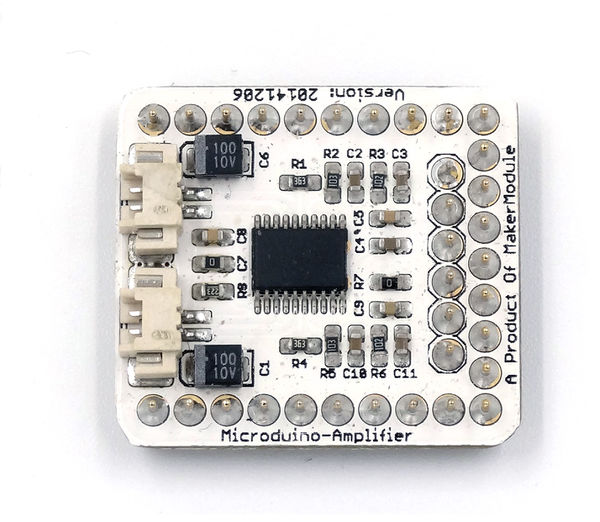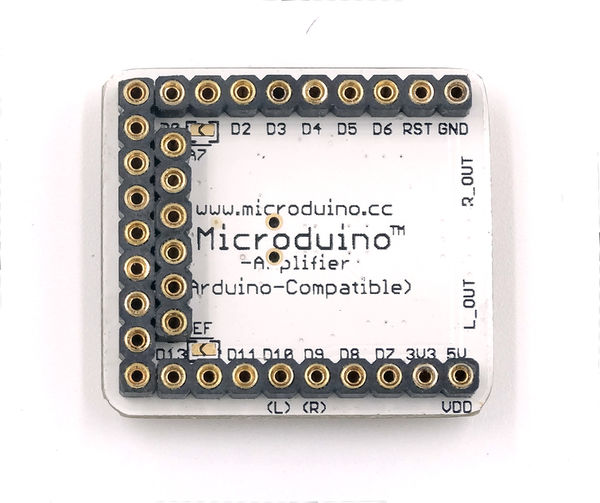“Microduino-LM4863”的版本间的差异
Jasonsheng(讨论 | 贡献) |
|||
| (未显示另一用户的1个中间版本) | |||
| 第1行: | 第1行: | ||
| + | {{Language|Microduino-LM4863}} | ||
{| style="width: 800px;" | {| style="width: 800px;" | ||
|- | |- | ||
| 第60行: | 第61行: | ||
*Prepared Hardware:Microduino FT232R、Microduino Core、Microduino SD、Microduino LM4863; | *Prepared Hardware:Microduino FT232R、Microduino Core、Microduino SD、Microduino LM4863; | ||
*Prepared Software:Arduino IDE(1.0 release upper)、Microduino provides test program(Arduino part)、SimpleSDAudio library、Audio file creation tools; | *Prepared Software:Arduino IDE(1.0 release upper)、Microduino provides test program(Arduino part)、SimpleSDAudio library、Audio file creation tools; | ||
| − | * | + | *Put the downloaded library to the libraries folder of Arduino IDE installation; |
| − | * | + | *Copy the "EXAMPLE.AFAM" in examples folder to memory card; |
| − | * | + | *Start Arduino IDE,open the "BareMinimum" program,card type chosse "Microduino Core (Atmega328P@16M,5V)",download directly; |
| − | * | + | *Then you can listen it! |
| − | ** | + | **If you want to play your own audio, just need replace the "EXAMPLE.AFM" by you made audio file. |
| − | |||
| − | |||
| − | |||
| − | |||
| − | |||
| − | |||
| − | |||
| − | |||
| + | ===The process to make an audio file=== | ||
| + | *Convert any audio file into a. Wav format using a software "Format Factory"; | ||
| + | *Generate an audio file: | ||
| + | **We need to use a SoX-based tool, and then choose the appropriate conversion process based on the operating frequency that your Microduino selected; | ||
| + | **Decompression the tool,then enter into“Arduino with 16 MHz”folder,put the audio file into this folder,and drag to "FullRate@16MHz_Stereo.bat" (16M full stereo) batch on; | ||
| + | **then you can convert the file, will pop up a dialog box appears "Press any key to continue ..."; | ||
| + | **After completed, you will find a new folder, the converted file is there. | ||
==Pictures== | ==Pictures== | ||
2014年2月16日 (日) 01:41的最新版本
| Language | English |
|---|
|
文件:Microduino-LM4863-rect1.jpg Microduino-LM4863 Microduino-LM4863 is a D-Class Amplifier Module. Widely used in music embedded system. |
Feature
|
Specifications
文件:LM4863-Pinout-2.jpg Microduino-LM4863-Pinout 文件:LM4863-Pinout-1.jpg Microduino-LM4863-Pinout DocumentEagle PCB 文件:Microduino-LM4863.zip Main Component
Development
Arduino library and supported package
How to use the library
Externally controlled low-power shutdown
ApplicationProgram Download
The Audio experiment using Core and SD
The process to make an audio file
Pictures
|

